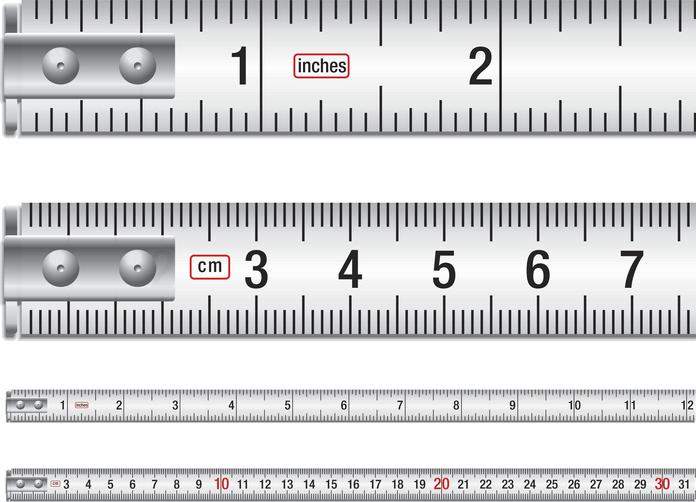- FMA
- The Fabricator
- FABTECH
- Canadian Metalworking
Our Publications
Categories
- Additive Manufacturing
- Aluminum Welding
- Arc Welding
- Assembly and Joining
- Automation and Robotics
- Bending and Forming
- Consumables
- Cutting and Weld Prep
- Electric Vehicles
- En Español
- Finishing
- Hydroforming
- Laser Cutting
- Laser Welding
- Machining
- Manufacturing Software
- Materials Handling
- Metals/Materials
- Oxyfuel Cutting
- Plasma Cutting
- Power Tools
- Punching and Other Holemaking
- Roll Forming
- Safety
- Sawing
- Shearing
- Shop Management
- Testing and Measuring
- Tube and Pipe Fabrication
- Tube and Pipe Production
- Waterjet Cutting
Industry Directory
Webcasts
Podcasts
FAB 40
Advertise
Subscribe
Account Login
Search
Will 3D printing make America finally go metric?
Adopting the metric system would raise efficiency, quality, and profitability for American manufacturers.
- By Kip Hanson
- UPDATED June 27, 2020
- June 29, 2020
I once turned parts on a CNC lathe fitted with an 8-inch chuck and 17 inches of Z-axis travel. There was a 6-inch dial caliper in my toolbox, nestled alongside matching 1-, 2-, and 3-inch micrometers. And the 143-piece set of gage blocks in my bottom drawer? Not one of those precision-ground hunks of metal was cleanly divisible by the distance that monochromatic light travels in a vacuum in 1/299,792,458 of a second.
Don’t get that last part? You’re not alone. That’s the length of 1 meter, and aside from the United States, only two other countries—Liberia and Myanmar—have told the metric system to get lost. It appears, however, that even these small countries are coming to their senses, moving to metric as quickly as their national budgets will allow. And America? Not so much.
What’s all this have to do with additive manufacturing? Perhaps nothing, except that I’ve recently noticed something: Practically all of the 3D printers advertised today are built to metric dimensions, use metric feedstock, and have metric build chambers. I’m sure there are a few stragglers out there, but of the equipment brands I checked (with one notable exception that I refuse to name), every single one lists metric values first and imperial second.
You can tell I’m a big fan of the metric system. Strike that. I’m a big fan of any system that gets everyone working from the same playbook. And since everyone except the United States has adopted metric as their standard of measurement, my feelings are that we should set aside our national pride for the next decade or so and follow suit. That—and—metric is just easier.
Imagine a world without conversions. No more inch-metric rounding errors. No more crashed Mars orbiters or Air Canada Boeing 767s running out of fuel mid-flight (Google it).
More importantly, at least for any Americans operating 3D printing equipment, there’d be no more wondering whether a 90° C (194 ° F) printer chamber is hot, or 10kg (22.05 lb.) of metal powder is heavy, or how many 2-inch wide parts will fit on a 150mm (5.9 inch) build plate. See what I mean?
It almost happened. In 1973, my sixth-grade schoolteacher, Mrs. Anderson, was hell-bent on teaching metric to me and my classmates. Congress passed the Metric Conversion Act two years after that (not because of Mrs. Anderson’s efforts). We were on our way.
By 1981, however, the fledgling United States Metric Board was telling Washington that things weren’t going so well. It seemed the American public wasn’t yet on board with the idea. With a little push from his metric-hating, not-so-forward-thinking political advisers Frank Mankiewicz and Franklyn “Lyn” Nofziger, Ronald Reagan put a stop to the whole thing a year later.
I’m hoping that the U.S. is finally ready for a metric revolution. It would hurt for a while, especially for those of us who’ve grown up with feet, pounds, etc., but we’d get used to it. And for manufacturers, both additive and subtractive—not to mention everyone else in this great country of ours—it would raise efficiency, quality, and profitability.
C’mon people, enough is enough. It’s time to go metric.
About the Author

Kip Hanson
About the Publication
- Podcasting
- Podcast:
- The Fabricator Podcast
- Published:
- 04/30/2024
- Running Time:
- 53:00
Seth Feldman of Iowa-based Wertzbaugher Services joins The Fabricator Podcast to offer his take as a Gen Zer...
- Trending Articles
- Industry Events
Pipe and Tube Conference
- May 21 - 22, 2024
- Omaha, NE
World-Class Roll Forming Workshop
- June 5 - 6, 2024
- Louisville, KY
Advanced Laser Application Workshop
- June 25 - 27, 2024
- Novi, MI
Precision Press Brake Certificate Course
- July 31 - August 1, 2024
- Elgin,



























